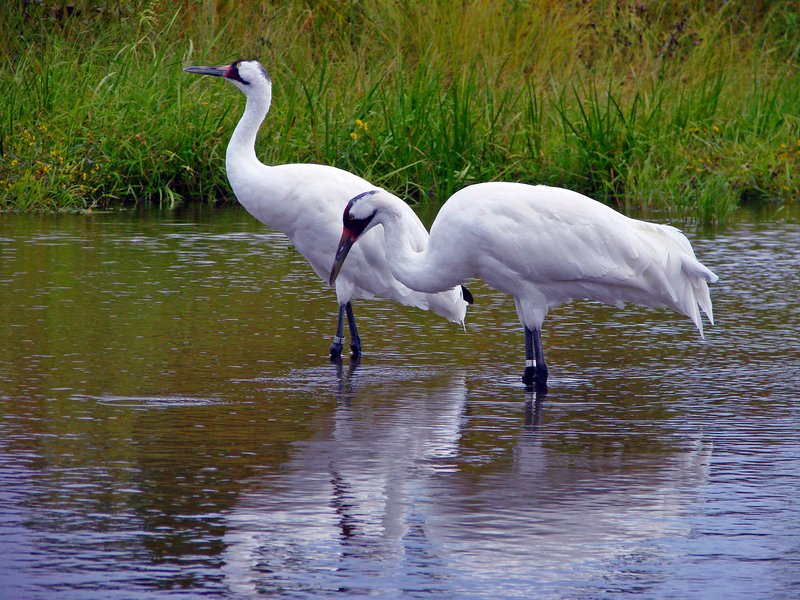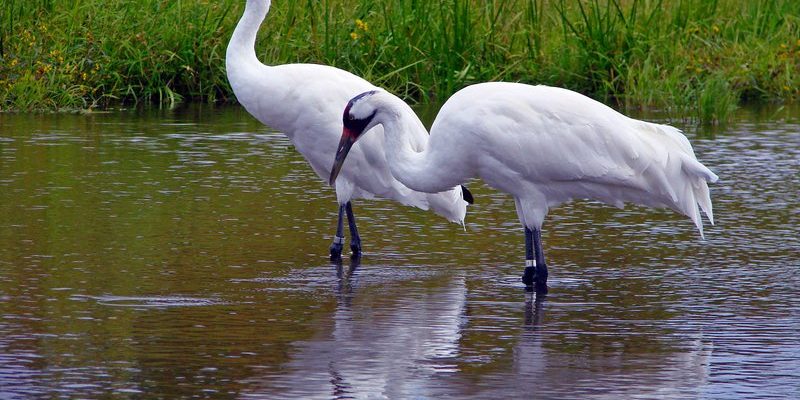
So, what exactly makes their flying and hunting techniques so special? Well, cranes have developed strategies that are nothing short of fascinating. From their powerful wings that can carry them thousands of miles to their precise hunting methods, each detail contributes to their survival. If you’ve ever wondered how these incredible birds manage to hunt and fly with such finesse, let’s dive into their unique abilities.
The Anatomy of a Crane: Built for Flight
To understand cranes’ flying techniques, it helps to start with their anatomy. They have long legs, long necks, and large wings, which all play crucial roles in how they fly and hunt. Their wings, in particular, are a marvel. Cranes can have wingspans of up to 7 feet! That’s like having your own personal glider.
The structure of their wings is designed for both strength and efficiency. The large surface area allows them to catch thermals—those rising columns of warm air. When a crane takes off, it can soar high without flapping its wings too much. This is an energy-saving trick that lets them travel long distances while hunting or migrating. It’s a bit like running a marathon while utilizing every resource wisely.
Interestingly, cranes are also equipped with a lightweight body that facilitates flight. Their bones are hollow, making them less heavy without compromising strength. This clever design means they can spend more time soaring gracefully in the skies rather than flapping frantically just to stay airborne.
The Migration Journey: A Testament to Endurance
Cranes are famous for their migration patterns, which are some of the most impressive in the bird world. Each year, they travel thousands of miles between their breeding grounds and winter habitats. For instance, the Sandhill Crane migrates between North America and Central Mexico, covering over 2,500 miles!
This journey is not just a simple hop from one location to another. Cranes rely on specific strategies to navigate and conserve energy during their long flights. They typically fly in a V-formation, which allows them to take advantage of the updraft created by the bird in front. This positioning reduces wind resistance, making flight easier for the entire group.
Here’s the thing: these migrations are fraught with challenges. Cranes face weather changes, predators, and food shortages along the way. Their ability to time their migration with seasonal changes highlights their keen instincts. It’s precisely this adaptation that helps ensure their survival across varied environments.
Flying Techniques: Mastering the Skies
When cranes take to the skies, it’s a sight to behold. They possess unique flying techniques that not only showcase their beauty but also enhance their efficiency. Cranes can soar for hours, conserving energy while traveling. They do this by gliding on thermal updrafts, which help them gain altitude without much effort.
But flying isn’t just about soaring high; it’s also about precision. Cranes have remarkable control over their flight paths. They can make sharp turns and land gracefully, thanks to their strong legs and wing mechanics. As they approach their landing site, they use a combination of flapping and gliding to come in softly, almost like they’re putting on a show for an eager audience.
During migration and foraging, you might notice cranes flying together in sync. This group flying strategy not only makes their journey more efficient but also offers safety in numbers. By flying alongside each other, they can keep an eye out for predators. It’s teamwork at its finest—one of nature’s best-kept secrets!
Hunting Techniques: Precision and Patience
Now, let’s talk about how cranes hunt. Unlike birds of prey that dive down on their prey, cranes are patient and methodical. They mostly feed on small animals, insects, and grains, using their long necks and beaks to probe the ground. It’s all about finesse.
When hunting, cranes use their excellent eyesight to spot potential food. They often wade through shallow water or walk through fields, searching for anything that looks delicious. Once they spot their target, they strike with remarkable speed, using their beaks to snatch up their meal.
Cranes are also known to engage in a unique behavior called “dancing.” During courtship, these birds perform elaborate movements like hopping and flapping their wings. While this may look like just a display, it also helps strengthen their social bonds. In a way, it’s a part of their hunting strategy too—by maintaining strong partnerships, they work together to find and protect food sources.
Communication: The Language of Cranes
Cranes are not just silent flyers; they have a whole range of calls to communicate. Their vocalizations can vary widely depending on the situation. When they’re flying, you might hear a series of trumpeting calls that resonate far and wide.
These calls serve various purposes: from attracting mates to warning each other about dangers. The sounds can be encouraging during migration, as they help maintain connection within the group. Picture a choir singing in harmony—it’s all about support and unity.
In the marshlands or open fields, cranes also use body language to express themselves. During courtship or disputes, you might see them perform synchronized movements, which signal respect and intention. This combination of sound and motion creates a rich tapestry of communication, making cranes even more fascinating.
Conservation: Protecting a Unique Species
As beautiful as cranes are, they face threats that could impact their survival. Habitat loss, climate change, and pollution pose significant challenges. Many crane species are now endangered, making conservation efforts vital.
The good news is that various organizations are working hard to protect these amazing birds. Through habitat restoration programs and public awareness campaigns, they aim to ensure cranes can continue their migratory journeys and thrive in their natural environments.
You might wonder how you can help. Simple actions like supporting local conservation efforts, spreading awareness, or even just observing them from a distance can make a difference. By being informed and engaged, you become part of the solution to protect these majestic birds for future generations.
Cranes are a true testament to the beauty of nature. Their flying and hunting techniques not only highlight their adaptability but also their role in the ecosystem. From soaring high above to gracefully hunting on the ground, these birds teach us about the balance of life—where every flight and every meal counts.
So, the next time you see a crane, take a moment to appreciate the artistry in their movements and the unique skills that keep them afloat in this world. Their story is one of resilience, teamwork, and elegance, reminding us all of the wonders of wildlife that we must cherish and protect.

